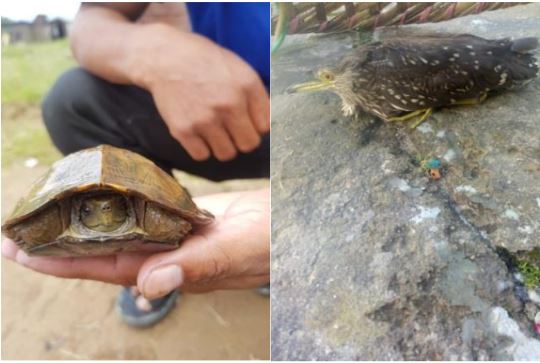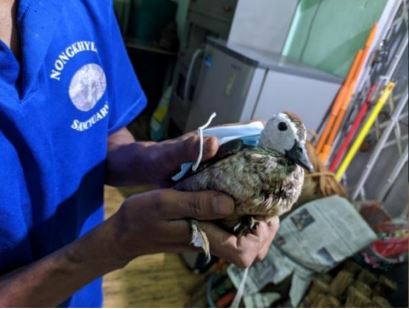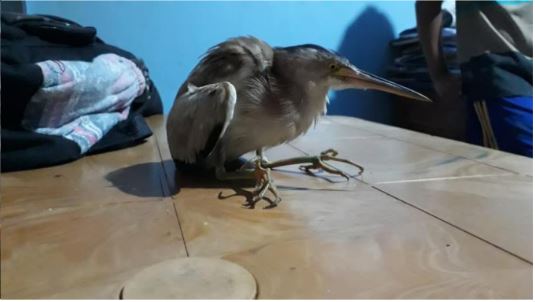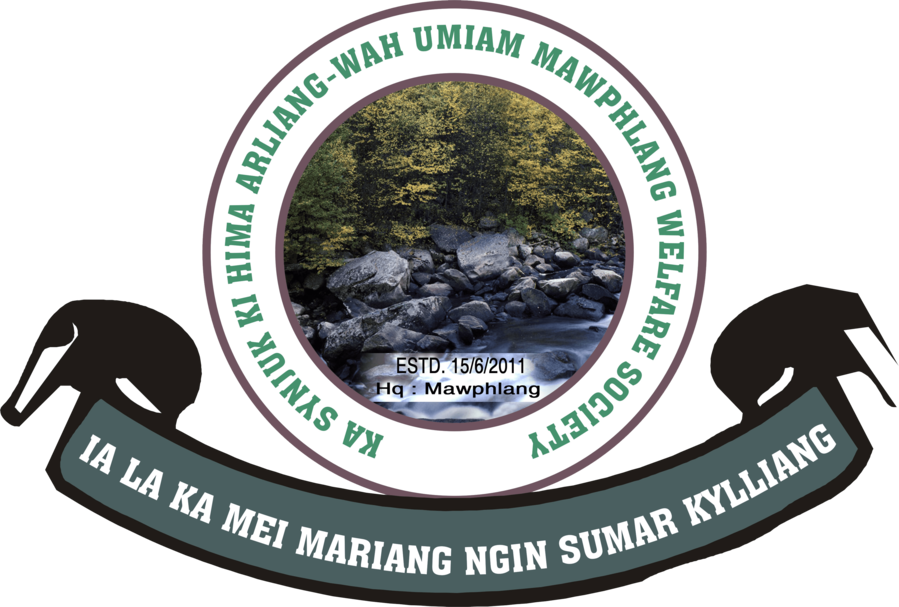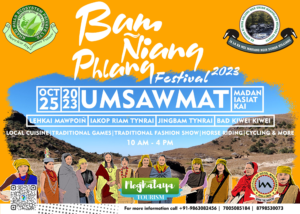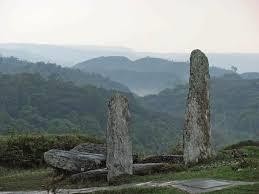
KHASI HILLS COMMUNITY PROJECT
3rd QUARTER REPORT JUL-SEPT 2020
The Khasi Hills Community Project is implemented by the Ka Synjuk Ki Hima Arliang Wah Umiam Welfare Society, a Federation of 10 indigenous Khasi governments (Hima) representing 62 participating communities guided by their village councils (Durbar).
PROJECT SUMMARY
The Khasi Hills Community Project is nearing 10 years of successful operation. The project has mobilized approximately 7,000 families to protect and restore 9,250 hectares of old-growth, montane cloud forests in the Umiam River Watershed. In addition, project communities are working to regenerate over 5,000 hectares of degraded forest. In return for their efforts to save their community forests from logging, forest fires, mining, and conversion to agriculture, the project provides communities with a diverse set of social and economic activities. The goal is to increase household income in the 70 participating villages, where 90 percent of the families are below India’s poverty line, while also improving public health through the provision of clean drinking water systems and smokeless cooking technologies to reduce household air pollution.
Response to COVID-19 Global Pandemic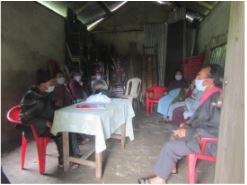 The COVID-19 outbreak continues to affect India as cases continued to rise throughout June. The 70 villages in the project area have been careful to follow social distancing procedures and have been wearing masks, many of them manufactured by women in project supported Self Help Groups. At the time of writing, the number of active cases in the state of Meghalaya have reached 984. Community facilitators and youth volunteers have continued with forest patrols, monitoring, and tree planting. In order to increase the availability and awareness of personal protective equipment (PPE), the project continues to distribute masks and sanitizer to those in need, including 400 masks to the communities in Wahlyngkien Ramklang. Masks
The COVID-19 outbreak continues to affect India as cases continued to rise throughout June. The 70 villages in the project area have been careful to follow social distancing procedures and have been wearing masks, many of them manufactured by women in project supported Self Help Groups. At the time of writing, the number of active cases in the state of Meghalaya have reached 984. Community facilitators and youth volunteers have continued with forest patrols, monitoring, and tree planting. In order to increase the availability and awareness of personal protective equipment (PPE), the project continues to distribute masks and sanitizer to those in need, including 400 masks to the communities in Wahlyngkien Ramklang. Masks
are also provided and worn during indoor meetings and programmes.
Forest Habitat and Wildlife Conservation
Conserving the montane cloud forests along the steep banks of the Umiam River is a major goal of the project. The dense forests drop over 500 meters to the rushing waters of the River which subsequently flows into Bangladesh. The historic David Scott Trail constructed in the early 19th century, winds its way up the river gorge and has become a popular hiking route.
A portion of the trail is on project land and the community constructed rest stops and provides maps and guides. It continues to be an important eco-tourism community project. Forest conservation is complemented by community efforts to restore forest fragments on the hill tops above the river, creating a wildlife corridor that extends from the 2,000-meter plateau down to the Bangladesh plains. This habitat supports a broad range of birdlife, reptiles, and mammals, as well as amphibians and fish, some of which are found only in this area. An important project strategy to reduce deforestation and forest degradation is community-based forest fire control. The project has continued to train local Community Facilitators in monitoring the production, transport, and use of charcoal within the project area. The monsoon months throughout the 3rd quarter helped to prevent any forest fires as there were no reported fires in the project area.
Degraded Forest Restoration
With over 5,700 hectares of degraded forest land, the project seeks to restore these areas to improve wildlife habitat, increase the hydrological function of the watershed, and sequester atmospheric carbon. Each participating village identifies the degraded community forests that they want to restore and agrees to close the land to firewood collection, grazing, and agriculture. The villages receive support from the project to clear fire lines, remove weeds and scrub, and open space for emerging saplings. Gaps are filled with seedlings and saplings.
Nearly 2,000 hectares of land have been restored in this way over the past eight years. Villages are finding that restoring the watershed is resulting in better stream flow levels, as well as water availability in the dry season.
The rainfall during 2020 was especially heavy which both aided in extending the season during which trees could be planted and prevented some planting in areas which are prone to landslides or where it was too difficult to reach the planting area. Throughout this quarter, over 7,300 trees were planted.
Clean Energy Transition
Household firewood consumption for cooking and heating is a major driver of deforestation in the project area as well as contributing to indoor smoke pollution that causes respiratory illness. In addition, fuelwood burning also is a major source of carbon emissions. To address these problems, the project wants to supply all project families with LPG cooktops, tanks, and electric rice cookers. Adoption of gas cooktops has reduced firewood consumption an average of 2.75 kgs of fuelwood per day for each household.
To get a better understanding of how families use fuel currently, including fuelwood and charcoal, the project is conducting ongoing surveys based on fuel needs and current arrangements. This will also provide information on which families are already implementing LPG and which would like to do so in the future. Throughout the 3rd quarter the project allocated nearly new 400 LPG connections to beneficiaries.
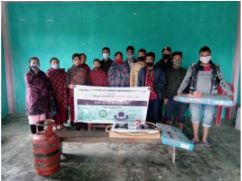
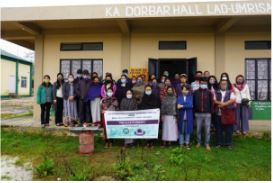
Sustainable Agriculture
With most families are dependent on farming for their income, improving agricultural practices has been a project priority. The project team seeks to assist families from a heavy dependence on low value potato cultivation to diversify into horticulture, green house vegetable growing, and organic farming. After the project distributed green houses, village families have been able to start cultivating cauliflower, broccoli, mint, coriander, eggplant, mustard leaf, chillies, and turnips to generate income. SHGs are also involved with vermicomposting to increase value-added products to their marketable goods and for use in their own agricultural practices. During this quarter, 31 new SHGs were adopted to the project after hearing from the Socio-Economic Team during awareness programmes.
Eco-Tourism and Cultural Conservation
At the time of writing there continues to be visitation restrictions to the sacred grove in Mawphlang. While the lack of tourists has affected the livelihood of the tour guides, it has provided time to initiate workshops and training programmes to better equip the guides and
community members once tourist activities begin again. Presentations were given on biodiversity, hospitality, hygiene, and sustainable tourism.
Community Horticulture
As part of the project’s sustainable agriculture program which includes organic farming techniques, vermiculture, and composting the project team is also providing high value fruit
trees to project families. This helps diversify farm produce, especially low value potato farming on which many families depend. Fruit trees also provide produce that can be converted to value added jams and jellies. The fruit trees are found to have a high survival rate when protected from grazing animals.
Additionally, project sponsored polyhouses have provided shelter from the heavy rains to produce ornamental flowers and bedding plants which have a good market in Meghalaya.
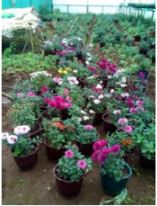
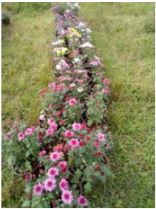
Mushroom Cultivation
The project continues to oversee a new mushroom cultivation programme and has been expanding this high value production system given the conducive moist, high elevation environment. Oyster mushrooms bring in a good return for local families once the mushroom house has been constructed. Spores which were difficult to procure during the lockdown have once again become available and have been distributed to several beneficiaries.
Community Development Grants
Each year the project provides the 70 participating communities with community development grants to fund projects that benefit many village families. The villages prepare proposals for priority projects. The current projects which were monitored in August had used for repairing schools, building water tanks, and increasing sanitation in their villages.
Project Updates
7 July 2020
The Forestry Team along with the Youth Volunteers of Hima
Nongspung planted 189 saplings at Mawpalong, Hima
Nongspung. On the same day, 5000 tree saplings were
planted at Laitkynsew village.
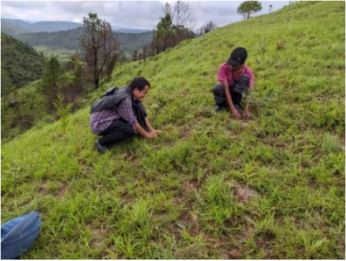
8 July 2020
The Forestry Team along with the CF and Youth Volunteer of Hima Mylliem monitored the tree plantation site at Mawlum Khongsit, Hima Mylliem. A total of 500 saplings were planted in the area.
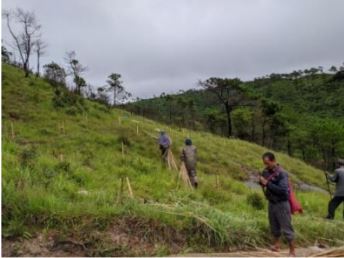
9 July 2020
The Forestry Team along with the CF and YV of Hima Mawbeh planted 203 tree saplings at Steplakrai, Hima Mawbeh.
11 July 2020
The Forestry Team along with the Asst. CF and YV of Hima Lyngiong planted 203 tree saplings at Lumingskul Lawshlem, Hima Lyngiong.
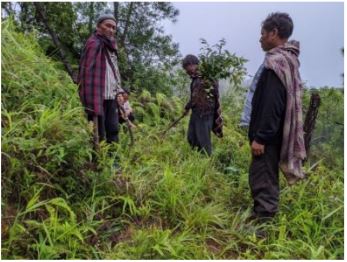
15 July 2020
The Forestry Team distributed Thuja sp. To William E Lewis Boys’ Home Orphanage at Mission Mawphlang for plantation in the area.
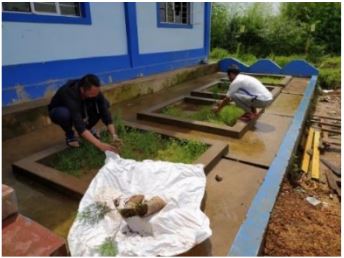
16 July 2020
Ten piglets were distributed at the Community Resource and Knowledge Centre, Nongrum of Hima Mawphlang to 9 SHGs and 1 individual beneficiary.
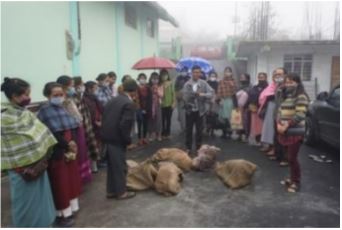
17 July 2020
The Forestry Team along with the Asst. CF of Hima Lyngiong inspected the site for setting up the home-based nursery at Lawshlem, Hima Lyngiong.
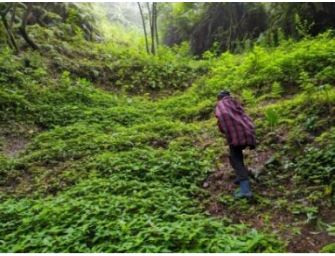
22 July 2020
The beneficiary of the sewing machine (March 2020) was unable to procure materials for straps during the lockdown, so he used his time to construct a house for his stitching business.
The beneficiary of the sewing machine (March 2020) was unable to procure materials for straps during the lockdown, so he used his time to construct a house for his stitching business.
Poly house beneficiaries met with the SET to determine a place for constructing the poly house.Tree plantation took place at Lumwaharkum, Hima Nonglwai where 330 tree saplings were planted with the Forestry Team, CF and active YVs.
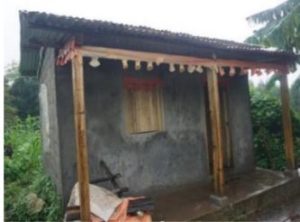
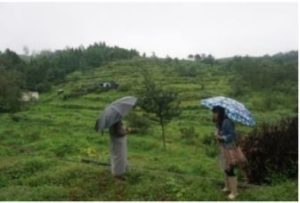
23 July 2020
The polyhouse of Ryntihlang FC, Nongrum village of Hima Mawphlang was updated. Through follow up and monitoring, it was reported that they will repair the polyhouse immediately. The new plants included cauliflower and mustard greens. Chilies were started and cared for in preparation for the next planting. The shade net at the resource centre has been planted with carrot and cabbage.
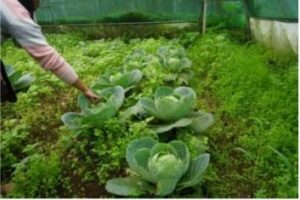
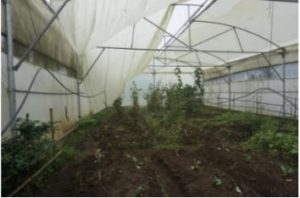
24 July 2020
The Forestry Team conducted tree plantation at Phodumdewsaw, Nongmadan under Hima Pamsanngut alongside the CF and local Youth Volunteers of Hima Pamsanngut in which 130 tree saplings were planted in the area.
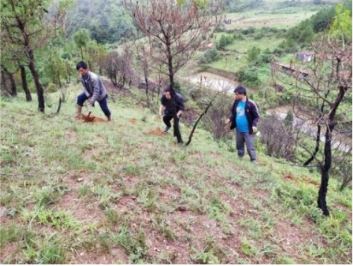
4 August 2020
The distribution of 11 piglets took place at the football ground in Kyrphei of Hima Mylliem. The piglets were distributed to 5 Self Help Groups and 6 individual households, totalling 11 beneficiaries.
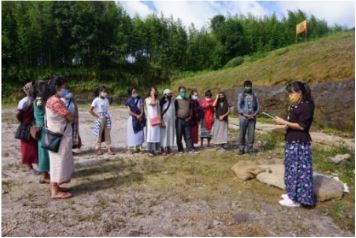
5 August 2020
The LWC of Wahlyngkien Ramklang cluster held a meeting at Wahlyngkien Ramklang Community Hall. After the meeting, 400 3-ply masks were distributed to the headmen of the four villages. The LWC of Nongrum Cluster also held a meeting at Nongrum Community Hall on the same day.
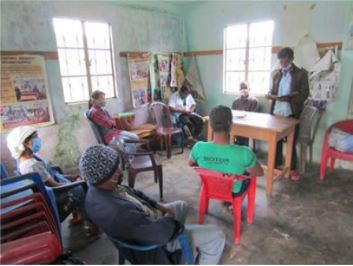
5 August 2020
The Forestry Team went for inspection of Home Based Nursery preparation by the local villagers in the Project Area at Mawlum Khongsit (Bah Niak), Hima Mylliem and Mawkohmon (Bah Batskhem), Hima Mawphlang and also distributed seeds to them for nursery plantation.
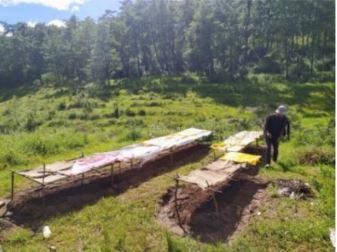
12 August 2020
The Forestry Team along with the CF, Asst.CF and Local Youth Volunteers of Hima Mawphlang participated in tree plantation programme at Lumpamagen, Sunei, Hima Mawphlang. A total of 388 tree saplings were planted in the area.
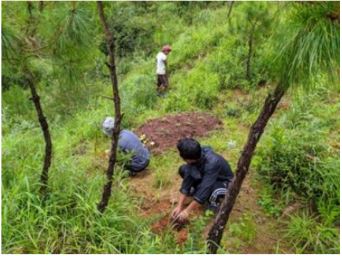
13 August 2020
The Socio Economic Team monitored and followed up with the SHGs and individual beneficiaries of poly house, shade net, and piggery. The poly house of Iaidlang SHG from Thainthynroh Village of Hima Lyngiong had planted chrysanthemum to grow for sale. The SHG can sell 120 chrysanthemum pots @ Rs 120 per flowerpot. The shade net of Mr. Mokan Rynjah was planted with tree tomato and beans upon inspection. The piglet of Iengtylli SHG of Umsawmat Village was found to be strong and healthy, eating both cooked and raw food, but mostly raw food was given. The Lamlynti SHG of Kyndong Laitmawbah village had cultivated chilies which were starting to bloom into flower.
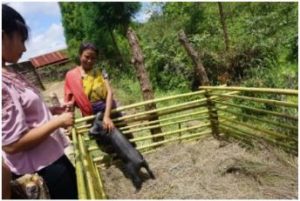
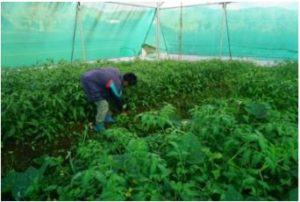
14 August 2020
Monitoring took place on the stitching of straps of Mr. Davinson Mawniuh from Nongthymmai village of Hima Laitkroh. During the discussion, he informed us that he has stitched 346 straps to date, which sell at Rs50 each.
14 August 2020
The Forestry Team conducted a tree plantation programme at Lumshnong, Laitthemlangsah, Hima Mawbeh along with the CF, Asst. CF and LYV’s of Hima Mawbeh wherein about 1030 tree saplings were planted.
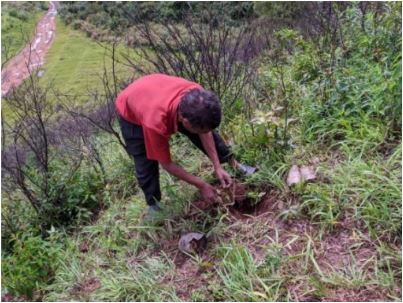
August 2020
Reference area site selection for the Project area was done in four days in the area adjacent to the current Project area: one in the Mawjrong Sohra
side and the other in the Tyrsad region. After site selection, interviews were conducted with village representatives for information regarding LCLU.
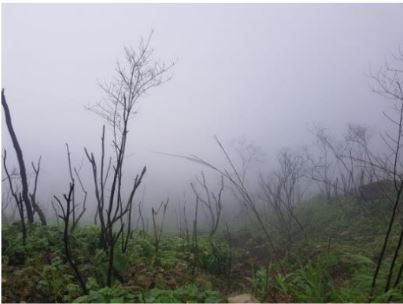
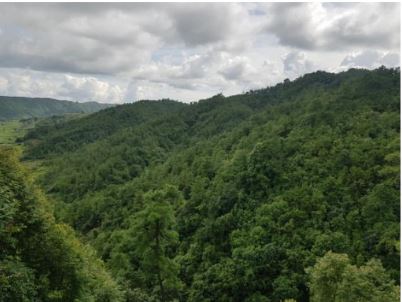
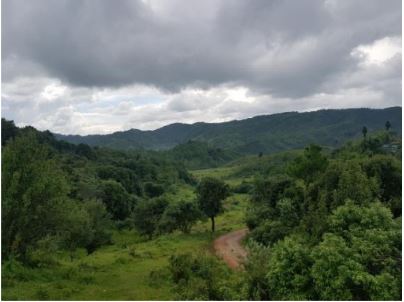
27 August 2020
The SET collected 100 packets of mushroom spawn from the Mushroom Development Centre Upper Shillong. The spawn was distributed to 14
beneficiaries, of which 7 are SHGs and 7 are individual households to promote sustainable livelihood.
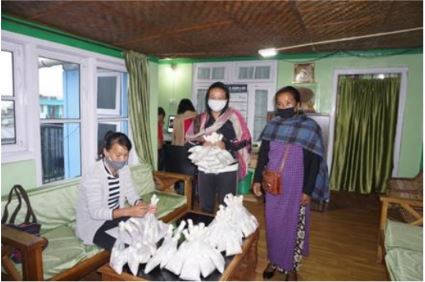
31 August 2020
Distribution of layer chicks to 5 SHGs and 8 individual households took place at the office. The expected impact is to promote sustainable livelihood and awareness of various activities synchronized by the project.
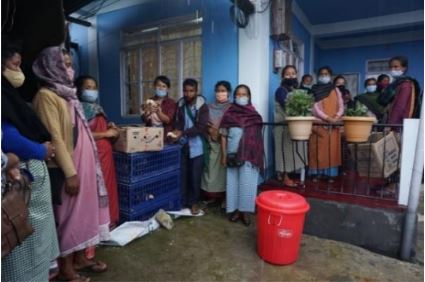
8 September 2020
Three hundred and ten layer chicks were distributed to 11 individuals and 2 SHG members, totalling 13 beneficiaries.
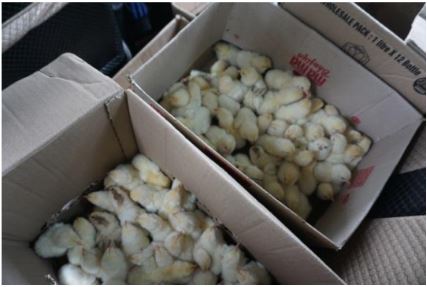
9 September 2020
Six piglets were distributed to 6 beneficiaries in Hima Laitkroh, Mawmyrsiang village.
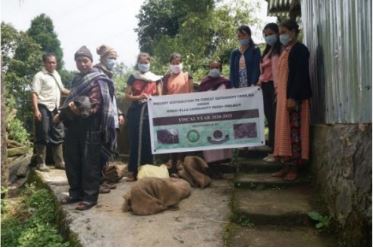
15 September 2020
Lasotas vaccination for layer chicks was performed by the SET in 4 villages.
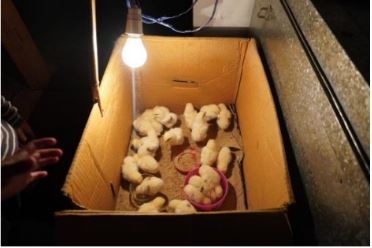
17 September 2020
SHG assessment training at Mawlum Tyrsad was conducted by the SET to the SHG members along with the CF from each Hima. Two SHGs were in attendance from Hima Pamsanngut, 3 SHGs from Hima Mylliem, and 2 SHGs from Hima Nongspung. The training was given by Ms. Beautiful Lyngdoh, the Field Reporting Supervisor.
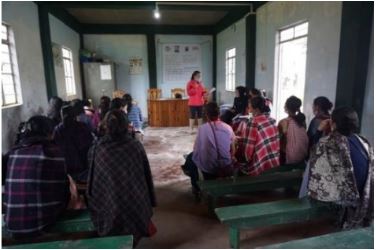
18 September 2020
The SET along with the Forestry Team had a meeting with the community of Kur Pahaw at Lumdiengiei village on the available scheme or benefit for the community people such as poultry, piggery, temperate fruits, poly house, and shade net.
18 September 2020
The Forestry Team monitored the tree plantation at Lumsyaidsngi, Laitkynsew, Hima Laitkroh along with the CF of Hima Laitkroh and Youth Volunteer. Pine seeds which had been dispersed in the area were also seen sprouting.
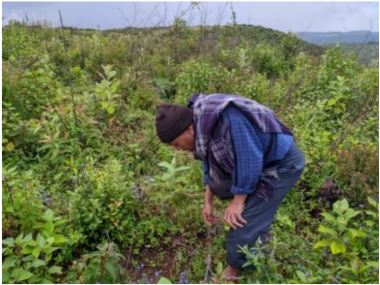
22 September 2020
Vaccination (IBD) for layer chicks was conducted by the SET in 3 Hima (Mawphlang, Lyngiong, Mylliem) comprising of 5 villages that is Ladumrisain, Nongrum, Wahlyngkien Sunei, Umsawmat, Kyrphei.
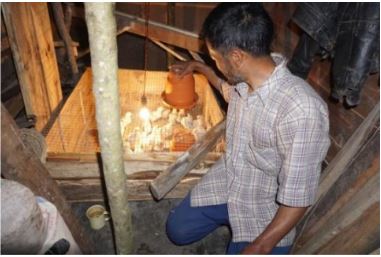
23 September 2020
The SET conducted SHG Assessment Training at Hima Laitkroh, Lummawkong village to 3 SHGs along with the CF. The training was given by Miss Beautiful Lyngdoh, the Field Reporting Supervisor.
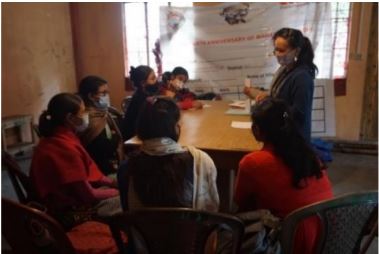
25, 28, 30 September 2020
The Forestry team along with the Socio Economic Team organised an orientation programme to the youth volunteers and CFs in Tyrsad, Mawjrong and Lad Mawphlang respectively. The total participants were 69 YVs and 16 CFs. The teams focused on the activities, achievements, work plans and financial assistance of the Project.
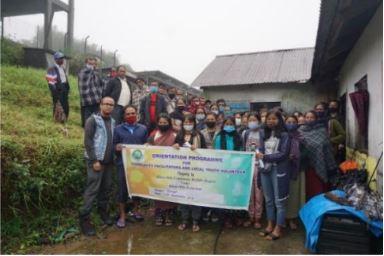
29 September 2020
The Forestry Team along with the Asst. CF of Hima Mawphlang and village member from Sunei village went to select the site at Rimaiong, Sunei, Hima Mawphlang for future tree plantation.
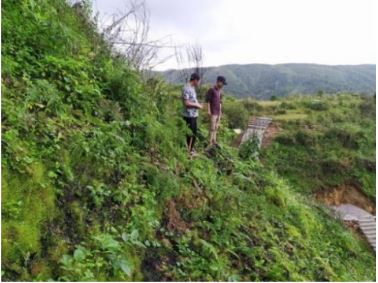
29 September 2020
The SET distributed 100 mushroom spawn to 18 beneficiaries.
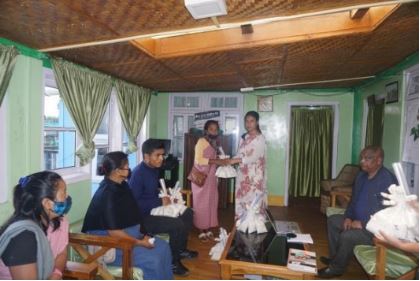
Biodiversity Monitoring:
During this quarter an endangered tortoise was rescued from a village stream and was released to the wildlife department for rehabilitation. A number of birds, including a heron and a duck, were also found by community members. The injured duck was handed over to the wildlife department for treatment and the other two uninjured birds were released into the wild.
